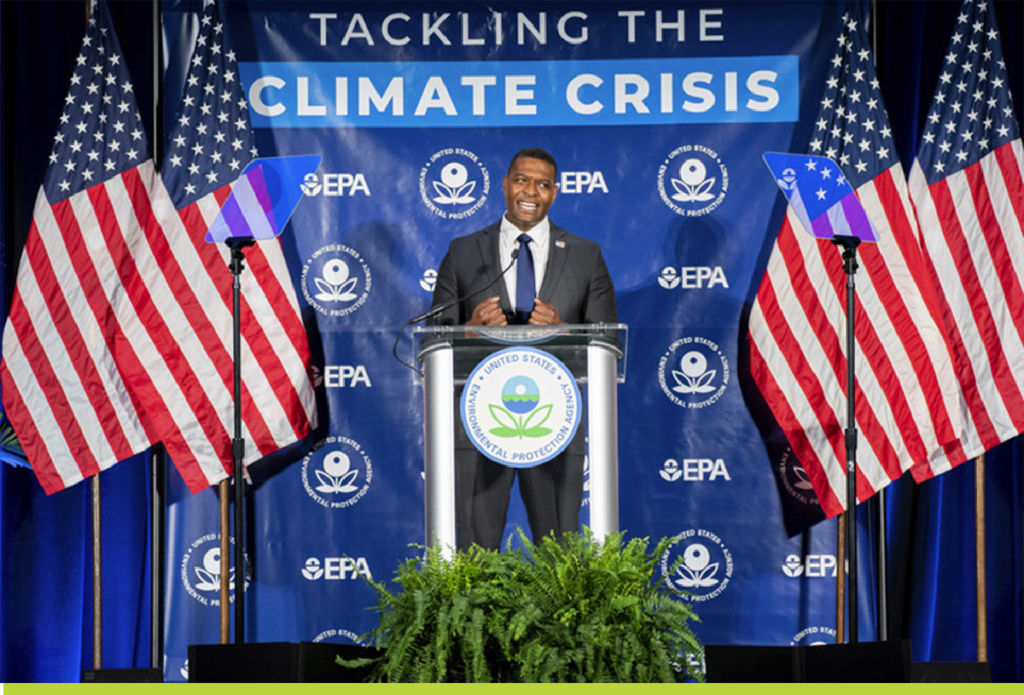Thirty states will receive funding totaling $4.3 billion from the Environmental Protection Agency (EPA) to support climate pollution reduction programs. Approximately twenty-five distinct projects targeting various sources of greenhouse gas emissions will benefit from this substantial funding infusion. These sources include of waste management, industry, transportation, electricity, and residential and commercial buildings. These grants are funded by the Inflation Reduction Act of 2022, a climate law sponsored by Democratic members of Congress. By addressing climate change and advancing renewable energy technologies, the bill constitutes a significant legislative endeavor.
The historic Inflation Reduction Act is a piece of legislation that aims to accelerate the growth of renewable energy sources like solar and wind power by allocating approximately $400 billion in tax incentives and spending. Oil, coal, and natural gas are examples of fossil fuels that are substantial contributors to climate change. The Act is intended to help support a large shift away from these fuels. The Act seeks to lower the country’s carbon footprint and advance sustainable energy practices by subsidizing renewable energy projects and activities.
One notable recipient of this new round of grants is the state of Pennsylvania, which will receive $396 million. This funding will be directed towards reducing industrial greenhouse gas emissions from various sources, including cement production, asphalt plants, and other material manufacturing operations. The announcement of this grant will be made in Pittsburgh by EPA Administrator Michael Regan and Pennsylvania Governor Josh Shapiro. Pennsylvania’s selection for such a significant grant underscores its critical role in the 2024 election cycle as a political battleground state.
Apart from Pennsylvania, California is also receiving a significant amount of funds. Initiatives at the ports of Los Angeles and Long Beach to decarbonize freight and transportation operations will receive funding totaling close to $500 million. This portion of the funding will go toward financing the installation of electric charging infrastructure, freight trucks with zero emissions, and the modification of cargo handling machinery to produce less emissions. Since these ports are vital to the regional and national economies, it is imperative that emissions in significant transportation hubs be addressed.
EPA Administrator Michael Regan emphasized the administration’s commitment to combating climate change through significant investments. He noted that President Biden’s administration has made the largest climate investment in U.S. history, aiming to provide billions of dollars to state, local, and tribal governments to tackle climate issues with the urgency they require. Regan’s remarks reflect the administration’s broader strategy to leverage federal funding to drive progress in climate action and environmental sustainability.
The grants are intended to support community-driven solutions that address air pollution, promote environmental justice, and accelerate the clean energy transition. By focusing on a diverse range of projects across various sectors, the EPA aims to foster a holistic approach to climate action that includes reducing emissions, enhancing energy efficiency, and supporting sustainable practices.
Following President Biden’s decision to withdraw from the presidential race, Governor Shapiro—who has been floated as a possible vice presidential contender—expressed his support for the grant. He emphasized that the money, which would help the RISE PA initiative, which aims to lower emissions in the industrial sector, is among the biggest federal awards Pennsylvania has ever received. This project supports the larger state and federal objectives of encouraging sustainable energy and lowering greenhouse gas emissions.
The Nebraska Department of Environment and Energy is another noteworthy grant recipient, receiving $307 million. “Climate-smart” agricultural techniques will be advanced and livestock agriculture waste will be decreased with the help of this grant. Improvements in agriculture will be complemented by projects that aim to increase energy efficiency in low-income families and commercial and industrial buildings. These will be supported by the grant. To further assist Nebraska in addressing climate change and promoting sustainable practices, the funding will also finance the installation of solar panels and the electrification of irrigation systems.
An important milestone in the country’s efforts to tackle climate change and move toward a more sustainable energy future has been reached with the granting of these awards. The EPA is contributing significantly to the advancement of environmental sustainability and the reduction of greenhouse gas emissions by funding a variety of programs. The funds demonstrate a larger commitment to combating climate change at the state and municipal levels through coordinated initiatives and focused investments. The EPA hopes to further the clean energy transition and assist localities in putting into practice practical climate solutions through these programs.
If you like the article please follow on THE UBJ.
